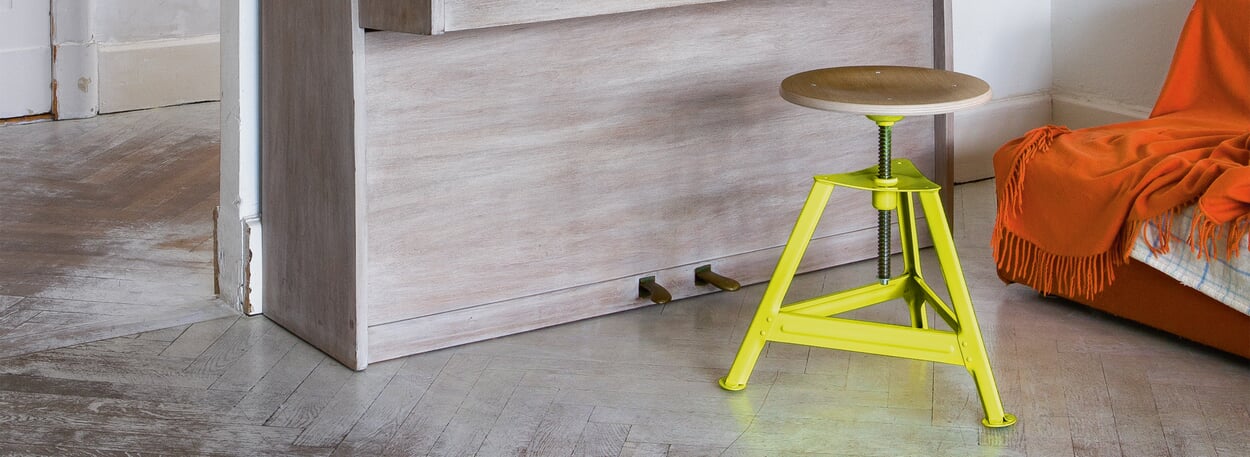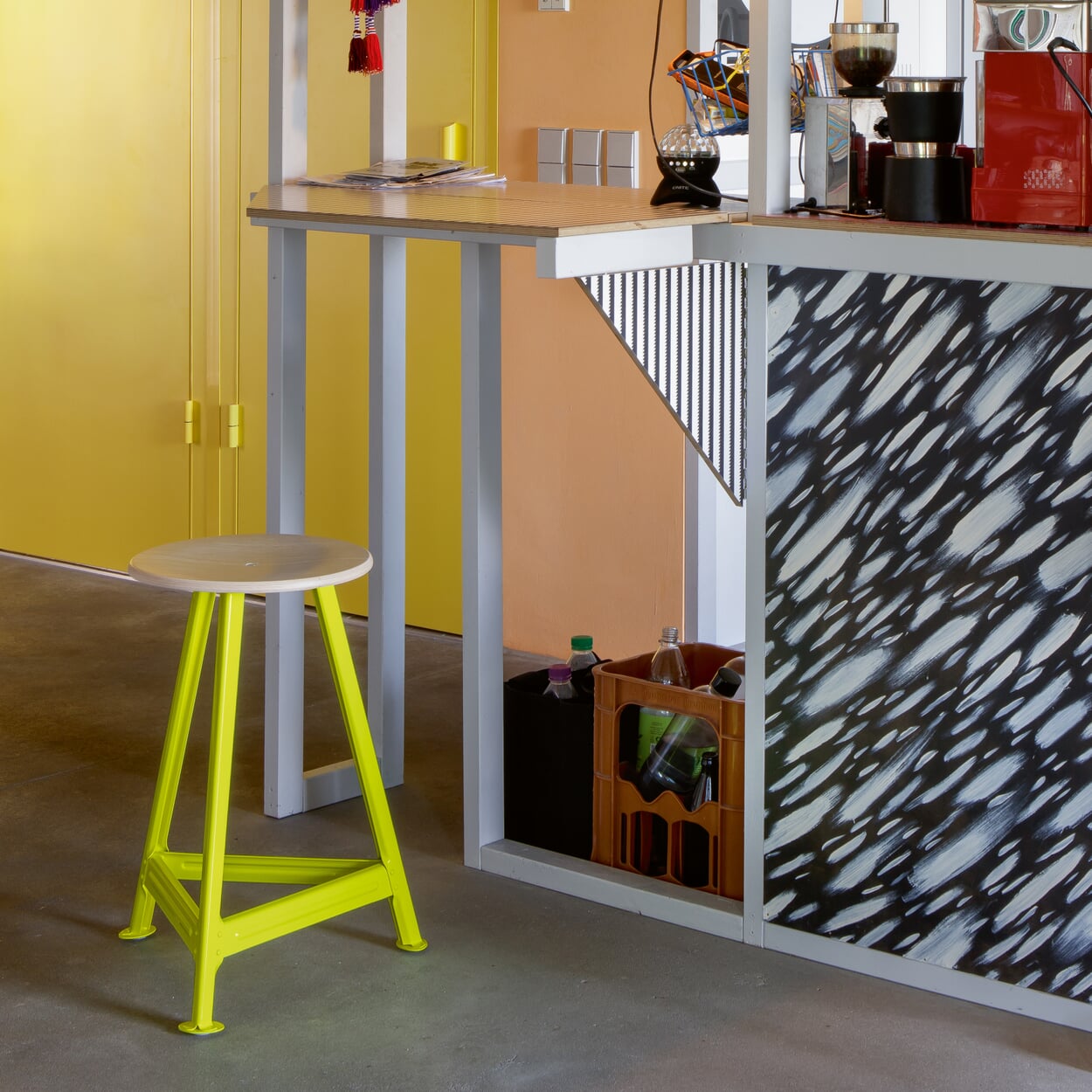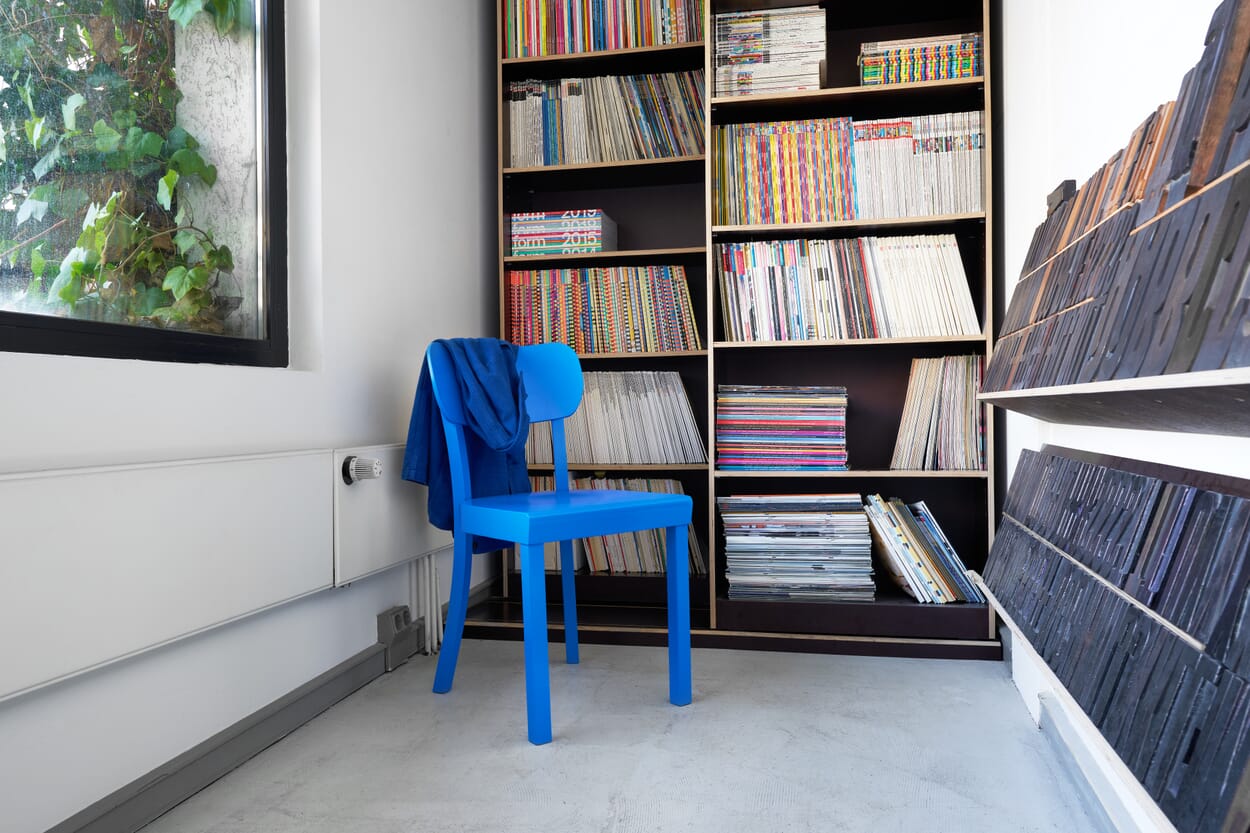DESIGN STORY(IES)
REVOLUTION AT THE GRASS ROOTS
Anyone who has a stool like this at their side has it good. Then as now. Because this three-legged stool is not only a helpful companion, its original model is also a small revolution. Certainly for the workforce over 100 years ago. While today almost every second working person spends their working day passively sitting in front of a computer and counting steps and calories with the help of smart devices, things were dramatically different for industrial workers at the turn of the century.
Although certainly not the solution to all problems, the stool with its three steel legs and round wooden top at the beginning of the 20th century - when the first models of this type of furniture were created - was an evolution in working posture. For the first time, it offered the craftsman standing at the machine the option of carrying out his work sitting down, if possible. It was particularly popular in serial production workshops. A historical significance that goes deeper than you might initially think. From the 1920s at the latest, this compact piece of seating furniture became increasingly widespread and popular, and not just in factories and workshops. With its minimalist design, simple construction and technical sophistication, it was perfect for use at the Bauhaus in Dessau. There, the three-legged seating furniture type was part of the initial furnishing of the workrooms. At MAGAZIN, the furniture archetype of the three-legged steel strip stool is highly valued for its purist, clear and self-referential design. A stool that does not strive for attention, but focuses on its industrial practicality. And surprises with this aesthetic appearance in the living area. Exactly as it has been produced in a Swabian factory for work furniture since the 1950s, it found its way into the MAGAZIN range early on. In various heights, then also as a four-legged model or with a height-adjustable swivel spindle and always with a slightly hollowed seat. Today, the stool, which with its simple, sturdy and stable appearance is considered the archetype of workplace seating, bears the name CHEMNITZ. It is tried and tested and popular - somehow taken for granted, even today, in the industrial workplace as well as in the home. An invitation to take a seat and get going. Whether for work or pleasure. By the way, CHEMNITZ is particularly popular at the piano. This text is an excerpt from the book "50 Jahre 50 Produkte - Designgeschichte(n) erzählt von MAGAZIN". Available now.
MAGAZIN1971
The book for MAGAZIN! 50 years of MAGAZIN encourages a special look at themes and products, stories and current affairs. Founded in Stuttgart in 1971, MAGAZIN has experienced and written history. Companions and contemporaries, product designers, customers and lovers of the brand have their say on what has happened. A collection of essays, e.g. by Sibylle Berg on "Schöner Wohnen" and Maxim Biller on "Erinnerungen von Morgen", meets contemporary topics on product design, design and furnishing. Supplemented by a special look at 50 exemplary products from the history of MAGAZIN. Including the popular and the little-seen, highlights and the inconspicuous, the favorite products of MAGAZINS and their background stories. 21x25 cm, 248 pages with many b/w and color illustrations, bound in fine linen Duchesse. Now available.
DISCOVER MORE
We are celebrating 50 years of enthusiasm for our products and selected range. Look forward to glimpses into our digital and analog shop windows.
In Stuttgart, 50 years ago, MAGAZIN was born. A store, an idea, a program formed an innovative company with stubbornness and perseverance.























